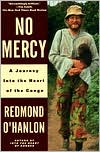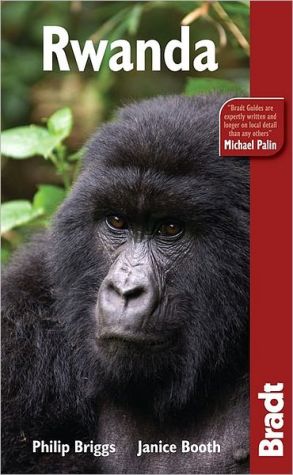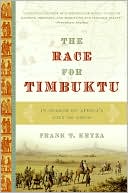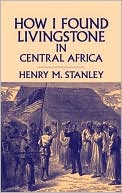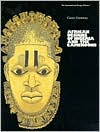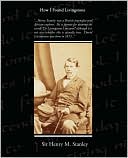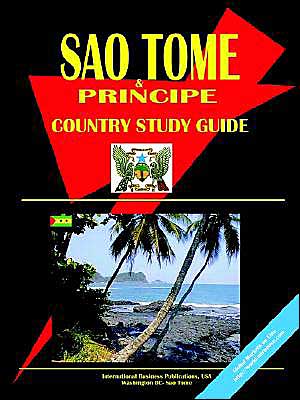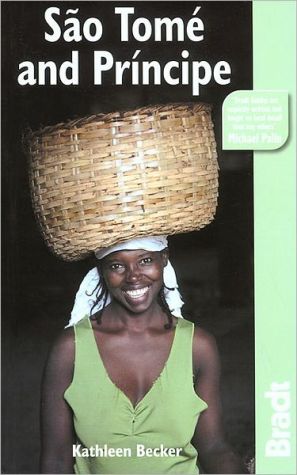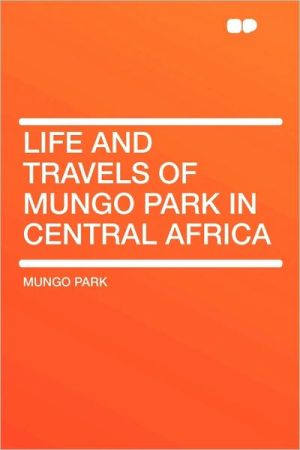No Mercy: A Journey to the Heart of the Congo
Lit with humor, full of African birdsong and told with great narrative force, No Mercy is the magnum opus of "probably the finest writer of travel books in the English language," as Bill Bryson wrote in Outside, "and certainly the most daring." \ Redmond O'Hanlon has journeyed among headhunters in deepest Borneo with the poet James Fenton, and amid the most reticent, imperilled and violent tribe in the Amazon Basin with a night-club manager. This, however, is his boldest...
Search in google:
No Mercy: A Journey into the Heart of the Congo, recently reissued in paperback, chronicles British travel writer Redmond O'Hanlon's latest adventure, though "misadventure" might be a more appropriate word. Both a hilarious account of inadequate preparation and an excess of dangerous bumbling about in the jungle and a classic tale of a civilized (well, all right, semi-civilized) man's journey into the green unknown, No Mercy is O'Hanlon in top form. Stephanie Zacharek There's a reason Redmond O'Hanlon is one of the finest travel writers around. Although his laserlike powers of observation and knack for telling a rip-roaring story have something to do with it, the thing that seals the deal is his complete willingness to cast himself as the straight man. He's the straightest straight guy around in No Mercy, which details the journey he made to a remote lake in the Congo, ostensibly in search of a mythical dinosaurlike creature that lives there, with a biologist friend and a coterie of guides and hired servants. O'Hanlon isn't just your standard-issue brainy skeptic who, lo and behold, finds himself humbled by the mysteries he discovers in an untamed world. An experienced explorer -- one of his previous books, In Trouble Again, details an adventure in the Amazon -- he knows what to bring along on a trip: the proper tools and medications, plenty of toilet paper and liquor and cigarettes to give as gifts to people whose help he needs. But beyond that, he's so open to all kinds of wonder that he sometimes seems like an enthusiastic school kid on a field trip, and that's what makes No Mercy so engaging. O'Hanlon writes about the people he meets as if he realizes he's only able to scratch the surface of their complexity. He never comes close to condescending to them: He doesn't laugh at their dependence on fetishes and their fear of sorcerers and murderous ghost creatures, and he makes sure the reader doesn't laugh, either. In describing the flora and fauna of the Congo, he never adopts that tired, emotionless Mr. Science Guy persona. When he spots a frightened mother gorilla, he (understandably) turns to mush: "She sat in a high fork of the tree, plainly visible, and through the binoculars I looked straight into her shiny black face -- at her averted eyes beneath the big protruding brow, her squat nose, the two linked horseshoes of her nostrils, her wide thin lips -- she seemed extraordinarily human; I was seized with an absurd desire to hold her hand, to tell her that it was all right." In the book's finest section, O'Hanlon describes how he acted as a surrogate mother to a baby gorilla someone had given him. He kisses the top of its head and tries to explain Freudian theory to it as a way of illuminating the ways of the world. Ultimately, No Mercy works because O'Hanlon recognizes that he's hardly the most interesting guy in his own book. That honor goes to Lary Shaffer, a biologist from Plattsburgh, N.Y., and O'Hanlon's companion through the first two-thirds of the story. When the two spot what they think is a flying squirrel, O'Hanlon starts fishing around in a guidebook to make sure he's identifying it correctly. While his nose is buried in the book, the squirrel takes a magnificent flying leap. "'Redso,' said Lary, putting a hand on my arm, 'did your mother never tell you? You can't learn everything from books ... You got to look around!'" Of course, O'Hanlon looks around plenty. But what makes him so likable is that he can be a real putz -- and he's not afraid to admit it. -- Salon
\ From Barnes & NobleThe Barnes & Noble Review\ Misadventures in the Jungle The British travel writer Redmond O'Hanlon, a big, bearded, hearty fellow, once appeared on "Late Night with David Letterman" and stupefied Dave by rambling incoherently but volubly about "the Chatwin thing" (he meant the London funeral of writer Bruce Chatwin), his own jungle adventures, and to Dave's visible horror, the little beast in Amazon waters that swims up your urethra and then.... But never mind that. He capped off his visit by drawing from his pocket something more repulsive than even Penn and Teller usually produce. A big hearty fellow, as I say, and he's banged around some of the world's most difficult places for years now. I've reviewed each of his books for various newspapers as they came along, and I've liked them a lot. I like O'Hanlon. I like him but I don't think I want to travel with him. His first book, Into the Heart of Borneo, needed no subtitle. It chronicled the adventures, as hilarious as they are harrowing, of O'Hanlon and (of all people) his good buddy, the very fine poet James Fenton, on a lengthy and dangerous river journey into the jungle interior of Borneo. Borneo, rather surprisingly, survived. Not satisfied yet — and not dead yet — O'Hanlon then took on the Amazon rainforest, recording that journey in In Trouble Again: A Journey Between the Orinoco and the Amazon. That book probably has a higher mud content than any equivalent travel account. He survived mud, flood, insect pests, and piranhas, and his story made me laugh so hard that I was willing to forgive his lack ofpreparation andhis apparent ignorance of the fact that his clumsy banging around in the forest put him in constant mortal danger. Eventually he emerged from the forest, and, as much to his own surprise as the reader's, he was scratched and scarred but still very much alive and ticking. So off he went again. No Mercy: A Journey into the Heart of the Congo, recently reissued in paperback, chronicles his latest adventure, though "misadventure" might be a more appropriate word. Looked at one way, No Mercy is a hilarious account of inadequate preparation and an excess of dangerous bumbling about in the jungle, all in the service of a mad quest to find a mythical beast, the legendary dinosaur of Lake Tele. The only thing he really does right is bring along lots of booze and butts to use as bribes. Looked at another way, however, No Mercy is a classic account of a civilized (well, all right, semi-civilized) man's journey into the green unknown. The pattern for such books was set in the 19th century, and it's just as valid and powerful as it was then. And clearly, O'Hanlon wanted to stress this element, because the book itself is handsomely decorated with fascinating illustrations from earlier travel narratives as well as many of his own photos, and it has a lengthy and valuable bibliography. It's the vivid interplay of present humor and homage to the past that makes O'Hanlon's books so special. He's definitely on my A-list. —Alan Ryan\ \ \ \ \ Stephanie ZacharekThere's a reason Redmond O'Hanlon is one of the finest travel writers around. Although his laserlike powers of observation and knack for telling a rip-roaring story have something to do with it, the thing that seals the deal is his complete willingness to cast himself as the straight man. He's the straightest straight guy around in No Mercy, which details the journey he made to a remote lake in the Congo, ostensibly in search of a mythical dinosaurlike creature that lives there, with a biologist friend and a coterie of guides and hired servants.\ O'Hanlon isn't just your standard-issue brainy skeptic who, lo and behold, finds himself humbled by the mysteries he discovers in an untamed world. An experienced explorer -- one of his previous books, In Trouble Again, details an adventure in the Amazon -- he knows what to bring along on a trip: the proper tools and medications, plenty of toilet paper and liquor and cigarettes to give as gifts to people whose help he needs. But beyond that, he's so open to all kinds of wonder that he sometimes seems like an enthusiastic school kid on a field trip, and that's what makes No Mercy so engaging.\ O'Hanlon writes about the people he meets as if he realizes he's only able to scratch the surface of their complexity. He never comes close to condescending to them: He doesn't laugh at their dependence on fetishes and their fear of sorcerers and murderous ghost creatures, and he makes sure the reader doesn't laugh, either. In describing the flora and fauna of the Congo, he never adopts that tired, emotionless Mr. Science Guy persona. When he spots a frightened mother gorilla, he (understandably) turns to mush: "She sat in a high fork of the tree, plainly visible, and through the binoculars I looked straight into her shiny black face -- at her averted eyes beneath the big protruding brow, her squat nose, the two linked horseshoes of her nostrils, her wide thin lips -- she seemed extraordinarily human; I was seized with an absurd desire to hold her hand, to tell her that it was all right." In the book's finest section, O'Hanlon describes how he acted as a surrogate mother to a baby gorilla someone had given him. He kisses the top of its head and tries to explain Freudian theory to it as a way of illuminating the ways of the world.\ Ultimately, No Mercy works because O'Hanlon recognizes that he's hardly the most interesting guy in his own book. That honor goes to Lary Shaffer, a biologist from Plattsburgh, N.Y., and O'Hanlon's companion through the first two-thirds of the story. When the two spot what they think is a flying squirrel, O'Hanlon starts fishing around in a guidebook to make sure he's identifying it correctly. While his nose is buried in the book, the squirrel takes a magnificent flying leap. "'Redso,' said Lary, putting a hand on my arm, 'did your mother never tell you? You can't learn everything from books ... You got to look around!'" Of course, O'Hanlon looks around plenty. But what makes him so likable is that he can be a real putz -- and he's not afraid to admit it. -- Salon\ \ \ \ Library JournalO'Hanlon's current driving passion-after journeying among the Amazon's headhunters in his most recent In Trouble Again (Random, 1990) is to catch a glimpse of the African version of the Loch Ness monster: the legendary Mokl-mbembe dinosaur residing in the unreachable depths of Lake Tl, deep in the northern Congo forests. Intrepid-or merely insensible to pain-O'Hanlon ventures forth, armed with antivenom serums and innumerable medicines against alarmingly resistant diseases; bribes for officials of the Marxist People's Republic of the Congo; presents for the Pygmies he hopes to find; a crusty scientist companion, Larry Shaffer, from Plattsburgh, New York; and volumes of birding guides and H.M. Stanley's chronicles of travels into Africa before him. Neither hostile local chiefs nor an army of skin-crawling bedevilments will thwart our O'Hanlon from his goal. His account is minute and ironical, given lively relief by Shaffer's gallows humor. It offers compelling reading, for seasoned travelers and couch potatoes alike, and includes an excellent bibliography of the rich history, wildlife, and exploration of the Congo. Highly recommended.-Amy Boaz, "Library Journal"\ \ \ \ \ Kirkus ReviewsBeset by bedbugs, tsetse flies, venal sorcerers, and nettlesome Marxist functionaries, O'Hanlon (In Trouble Again, 1989, etc.) journeys far upriver in the Congo to discover the truth about a prehistoric beast rumored to live deep within the forest.\ An odd retinue—including a sex-starved Congolese government naturalist, a humorously foul-mouthed and caustic American specialist in animal behavior, and a number of good-natured pygmies—accompanies the intrepid O'Hanlon on this twisted but mirthful Conradian adventure. Subsisting principally on a diet of manioc with the odd dish of monkey meat thrown in, O'Hanlon and his friend, Lary Shaffer (the animal behaviorist), are repeatedly exposed to gastrointestinal discomfort and must endure such other jungle delights as ferocious ants (a malignant swarm of driver ants actually eats one of the travelers' chickens), pythons, and angry chimpanzees. In each village they pass through, they must placate sorcerers or pay off local chiefs. Too often O'Hanlon encounters disease and death; in one chilling episode, he witnesses a boy's drowning in the Congo River, to the consternation of none but the two Westerners. Marcellin, the guide who seems to know a woman in every port, shrewdly steers a protesting O'Hanlon through this strange human and botanical landscape, but even an educated African is not immune to the rules of this spirit-based world. Indeed, by the end of his narrative, O'Hanlon himself, forever stroking a fetish given him by a sorcerer, has gone somewhat native—though not irrevocably, one would guess. O'Hanlon's staggering knowledge of the region's flora and fauna, in addition to his considerable descriptive skills, adds a further dimension to this casually wacky (and occasionally very sobering) account.\ As travel yarn, social commentary, zoological handbook, and snappy satire, O'Hanlon's book resists easy categorization. While some readers might wish O'Hanlon had controlled his more outré rumblings, this is definitely a trip worth taking.\ \ \
